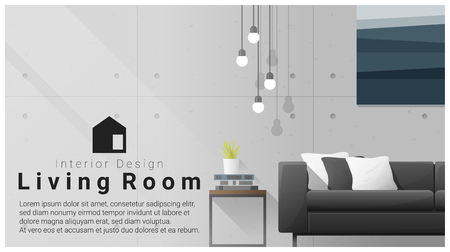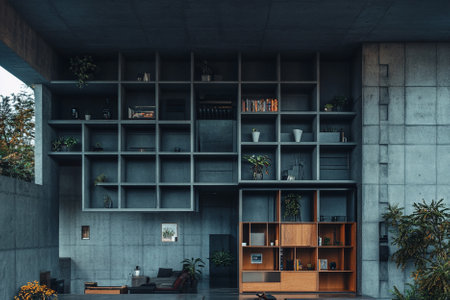Maximising Eaves: Clever Use of Awkward Spaces
Loft conversions in the UK often come with their fair share of quirks—sloped ceilings, tight corners, and low headroom are all part and parcel of transforming attic spaces into functional rooms. Rather than seeing these features as obstacles, they can be turned into opportunities for smart storage solutions that truly maximise every inch available. Custom-built cabinetry is particularly effective beneath eaves, where standard furniture simply won’t fit. By working with the angles of your roofline, you can install made-to-measure cupboards or drawers that turn what might otherwise be wasted space into practical storage for clothes, books, or household essentials. Open shelving fitted snugly along the lower sections of walls can also provide a handy spot for displaying treasured items or storing boxes out of sight. In British homes where every square foot matters, especially in period properties with unique layouts, thoughtful use of awkward nooks not only declutters your living area but also adds character and value to your loft conversion.
2. Bespoke Built-ins: Fitted Wardrobes and Drawers
When it comes to loft conversions in the UK, making the most of every inch is crucial. Bespoke built-in storage—such as fitted wardrobes, drawers, and shelving—offers a tailored solution that not only maximises space but also complements the unique shape of your loft. Rather than relying on freestanding furniture, which often leaves awkward gaps or wasted corners, custom-built units can be designed to fit snugly into alcoves or beneath sloping ceilings.
The benefits of tailor-made storage are plentiful. First and foremost, you gain additional storage capacity without sacrificing valuable floor space—a significant advantage in homes where every square foot counts. Built-ins can be crafted to match the décor and architectural features of your property, blending seamlessly so that the overall aesthetic remains cohesive and uncluttered. This approach not only looks smart but also adds value and functionality to your home.
Consider how fitted solutions compare to off-the-shelf alternatives:
| Bespoke Built-ins | Freestanding Furniture | |
|---|---|---|
| Space Utilisation | Maximises awkward spaces and alcoves | Often leaves unused areas |
| Aesthetic Integration | Seamlessly matches existing interiors | May clash with room design |
| Storage Capacity | Customisable for specific needs (e.g., shoe racks, pull-out drawers) | Limited by standard dimensions |
| Longevity & Value | Adds long-term value to property | Lesser impact on property value |
Bespoke wardrobes can include clever features such as pull-down rails for high spaces, integrated lighting for ease of use, or even hidden compartments for valuables. Shelving can be designed at varying heights to accommodate books, decorative items, or seasonal clothing. The engineering challenge lies in working with the angles and reduced headroom typical of loft spaces—yet these constraints often inspire creative solutions that make your loft conversion both practical and visually appealing.

3. Under-the-Window Storage: Window Seats and Cubbies
One of the most charming and practical ways to maximise storage in a loft conversion is by making clever use of the space beneath your windows. In British homes, especially those with sloping ceilings or Velux windows, this often-overlooked area can be transformed into a multifunctional highlight. Installing a window seat with integrated storage not only creates a cosy nook for reading or enjoying the view over the rooftops but also provides a discreet solution for tucking away blankets, books, or even seasonal clothing. Built-in cubbies beneath Velux windows are another popular choice, as they fit snugly against the slope and make excellent use of what would otherwise be wasted space. These cubbies can be customised with doors or left open for baskets and boxes, allowing you to organise belongings neatly while maintaining easy access. Beyond their practicality, under-window storage solutions add undeniable character to loft interiors, embracing that quintessentially British blend of comfort and ingenuity. Whether it’s a deep-set bench with plush cushions or a row of painted cubbyholes that echo the home’s period features, these built-in ideas help create interiors that feel both personal and purposeful.
4. Multipurpose Furniture: Flexible Designs for Compact Spaces
One of the most effective ways to maximise your loft conversion is by selecting multipurpose furniture designed specifically for compact living. In British homes, where space is often at a premium, integrating furniture that serves more than one function can transform your loft into a highly adaptable environment. Consider ottomans with hidden compartments; these not only provide comfortable seating but also offer valuable storage for bedding, books or seasonal clothing. Fold-away desks are another practical solution, especially if you plan to use your loft as a home office or study area. When not in use, they can be neatly stowed against the wall, freeing up floor space for other activities.
| Furniture Type | Main Function | Secondary Function | Ideal For |
|---|---|---|---|
| Ottoman with Storage | Seating | Hidden Storage | Living areas, bedrooms |
| Fold-away Desk | Workspace | Space-saving | Home office, study nook |
| Sofa Bed | Sofa | Guest Bed | Guest room, lounge area |
| Nesting Tables | Coffee Tables | Expandable Surface Area | Lounge, entertainment spaces |
The right choice of multipurpose furniture not only supports a clutter-free environment but also allows your loft conversion to flexibly adapt to changing needs—be it hosting overnight guests or creating a tranquil reading spot. Opting for pieces in neutral tones and minimalist designs will help maintain an open, airy feel typical of modern British interiors while ensuring every inch of your loft works harder for you.
5. Open Shelving: Display and Access in Style
Open shelving has become a hallmark of contemporary British interiors, especially within loft conversions where both space and character are at a premium. By opting for open shelving, you introduce a sense of airiness that complements the unique architecture of attic spaces, while simultaneously enhancing practicality. Books, decorative pieces, or everyday essentials can be neatly arranged on these shelves, ensuring everything is within easy reach without the cluttered appearance that closed cupboards sometimes create.
One distinct advantage is the opportunity to blend traditional British charm—think classic hardbacks, vintage teapots, or family heirlooms—with modern efficiency. This approach fosters a lived-in feel that resonates with the British appreciation for personal history and storytelling through objects. Open shelves allow you to curate displays that reflect your personality and elevate the room’s ambience, making even the most compact loft feel inviting and purposeful.
Moreover, open shelving can be tailored to awkward nooks or sloping ceilings typical in many UK lofts. Whether it’s a custom-built shelf under an eave or a run of units along a gable wall, this solution maximises every available inch. The accessibility factor cannot be understated either; daily essentials remain visible and easy to grab—ideal for busy mornings or when hosting guests for tea. In essence, open shelving harmoniously unites style with substance, transforming your converted loft into a space where beauty and function coexist with unmistakable British flair.
6. Hidden Nooks: Secret Storage Through Creative Carpentry
One of the most charming aspects of British loft conversions is their ability to surprise with clever, understated storage solutions. Creative carpentry can transform awkward corners and unused spaces into practical hidden nooks that keep your home looking effortlessly tidy. Consider installing pull-out storage steps as part of your staircase—each tread becomes a handy drawer for shoes, seasonal clothing, or even children’s toys. Trapdoors built seamlessly into flooring or under window seats offer another ingenious method to stow away items you don’t use daily, such as Christmas decorations or luggage.
Concealed cupboards are another favourite among UK homeowners who value both function and aesthetics. Built flush with angled walls or beneath eaves, these cupboards vanish into the architecture, keeping clutter out of sight without sacrificing precious floor space. Custom joinery allows you to tailor each hidden nook precisely to your needs, whether it’s a secret bookshelf behind a panelled wall or a slim wardrobe tucked behind a sliding door.
These subtle solutions not only maximise every inch of your loft but also add an element of intrigue and craftsmanship to the interior. By embracing the quirky angles and unique features typical of British lofts, you can achieve storage that is both discreet and delightfully unexpected. Ultimately, investing in creative carpentry ensures your converted loft remains organised, spacious, and perfectly in tune with the characterful charm of UK homes.

